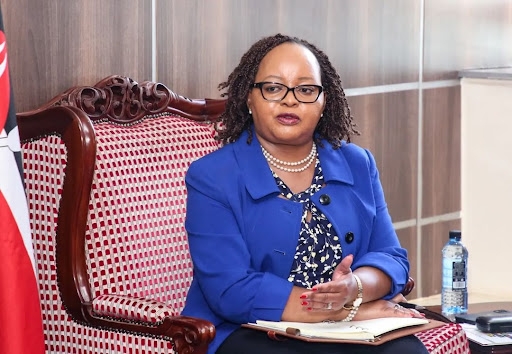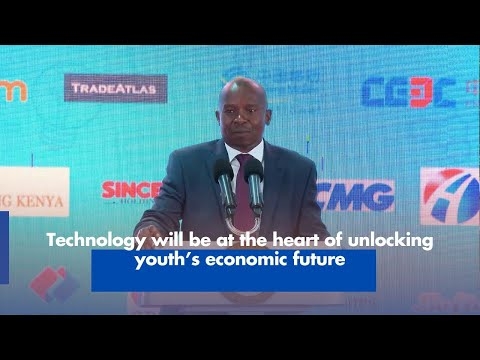The 2022 presidential campaign has taken shape as a two horse race.
ODM leader Raila Odinga has emerged as the main rival to Deputy President William Ruto in the succession of President Uhuru Kenyatta.
Raila, however, maintains he is yet to declare his presidential bid. But all indications are that he is a man in the race. He has come from behind Ruto to occupy the pole position of the man of the moment for Ruto to beat.
Previously, Ruto seemed to be a lone candidate, with the weak One Kenya Alliance that did not (still dosen’t) have a clear candidate. Therefore, the going was a little easy for the DP.
Raila’s entry into the ring once again has provided the necessary excitement for a presidential completion. Both candidates have gone full throttle to mobilise support across the country.
Of great importance has been the vote rich Mt Kenya region. The Deputy President had made significant inroads into the region until Uhuru got rattled and put efforts to stop him. The first frontier of confrontation was the BBI crusade. It was intended to culminate into a referendum until the courts declared the process unconstitutional.
Ruto and his anti-BBI brigade got a backhanded win, and with it, the DP got emboldened, attributing the decision to the will of God.
Following the crash of the BBI train, Raila launched the “Azimio la Umoja” movement, ostensibly to push the unity agenda of the constitutional amendment to fruition. But it was also an opportunity to mount his presidential campaign targeting Central Kenya.
The region has consistently voted against Raila since his first stab at the presidency in 1997. He must have considered that with the handshake with President Kenyatta, it could be a little easier to access the region.
And so Raila’s climb to the mountain began in earnest with Uhuru’s point men as support cast. As he intensified his engagement with the GEMA community, he used the Azimio la Umoja movement to make forays into his former stronghold areas. They provided a good opportunity to regroup and consolidate his allies.
While Ruto has relied on the Kikuyu youthful MPs to push his agenda, Raila has gone for the old guard and tycoons under the Mt Kenya Foundation umbrella. Raila’s engagement with GEMA culminated in the endorsement by the Mt Kenya Foundation as well as majority of the governors from the region.
Ruto, on the other hand, has targeted the churches with generous contributions to their development kitties. He has also launched the “bottom up economic model, aiming to appeal to the hearts of the restless and unemployed youths, as well as the huge vote basket of the marginalised informal traders.
Raila has responded by engaging the sections of the youth in technology oriented small-scale businesses, and lately adding boda boda operators into his fold.
The ex-Prime Minister also promised Sh6,000 for the vulnerable households.
All this is an attempt by the two leading horses to win over the key leaders of communities together with the grassroots network of voters. They have made successes at varied levels.
The difference in the level of success has depended on a number of factors and two of these seem to favour DP Ruto — at least for now.
The first is the choice of point (wo) men and political allies.
In the last general election, Ruto engineered confusion in the Jubilee Party nominations. The process was cancelled at the last minute and the deputy party leader subsequently took charge of the exercise.
It was shock as old hands in politics, especially in Central Kenya, Kisii and Coast regions lost to newcomers. Old guards like Kembi Gitura lost to Irungu Kang’ata as Murang’a senator, Mutahi Kagwe lost in Nyeri governor race, Gathoni Wamuchomba came in as Kiambu Woman Representative as did Purity Ngirici in Kirinyaga, while Ferdinand Waititu dislodge William Kabogo as Kiambu governor.
Ruto used the nominations to assemble a squad of new faces of youthful leaders to champion his agenda inside and outside of Parliament. The team exuded some freshness and energy that was deployed to crisscross the country immediately after the elections.
This team, which includes Mohamed Ali (Nyali and Independent), Aisha Jumwa (Malindi and formerly of ODM) Ndindi Nyoro (Kiharu) Moses Kuria (Gatundu South) and Kimani Ichungwah (Kikuyu) — has molded into vocal critics of the government with anti-establishment propaganda.
On the other hand, Raila has chosen to retain his old handlers in regions that have remained loyal to him, even after losing. Around him, Senator James Orengo (Siaya) still commands immense influence as is Junet Mohamed (Suna East), Gladys Wanga (Homa Bay) and John Mbadi (Suba South) from Nyanza.
Governors Hassan Joho (Mombasa) and Granton Samboja (Taita Taveta) are his eyes at the Coast, while Wycliffe Oparanya (kakamega) and ODM secretary general Edwin Sifuna are considered the gate keepers in Western region.
When he launched the Azimio la Umoja movement, Raila went for the governors and old-moneyed leaders in the hitherto hostile regions of Mt Kenya. In his company have been tycoons Peter Munga, SK. Macharia, Francis Muthaura and Peter Mbui of the Mount Kenya Foundation.
They have been relying on the county government networks of Francis Kimemia (Nyandarua), Ndiritu Muriithi (Laikipia), Kiraitu Murungi (Meru), James Nyoro (Kiambu), Lee Kinyanjui (Nakuru) and until recently, Anne Waiguru of Kirinyaga. The Raila team appears to be government operatives and system wheeler dealers.
The second factor that has come into play critically is communication.
Raila has relied on his experience to extol the virtues of the founding fathers, waxing historical narratives to palliate the restive and negative opinion that Central Kenya has held of him.
He has used his collaboration with the key area leaders to demonstrate that the demonic view they have off him is a product of negative and short termism propaganda. This messaging seems to have worked well with the old guards and those in Uhuru’s government.
However, the young generation, who do not know how this negative tribal narrative was weaved for power control purposes, seem unmoved. They have been acculturated to believe that Luos are anti-government, especially if it led by a Kikuyu. They have further been brainwashed to believe that Raila is the King of Luos and thus responsible for their behaviour.
Unfortunately for Raila, the handshake has made him inadvertent partner to Uhuru in government. Since Ruto all but left the government, Raila has had to style his messages in sympathy with Uhuru. This is partly to endear him to Uhuru’s support base. This has had the counterproductive effect of making him a government apologist.
On the other hand, Ruto has taken advantage of the economic downturn occasioned by the Covid-19 pandemic to create a savior picture of himself. He strategically left the government and has distanced himself from the failures of the Jubilee administration, particularly in the second term.
On occasions, he has spared no chance to blame Raila for Uhuru’s shortcomings. He paints the ODM leader’s historical perspectives of the national challenges as riddles of a man of old age, coining his messages in short crisp short term solutions to current economic suffering.
His hard criticism of the government has endeared him to the many unemployed youth across the country. While efforts have been by his critics to paint him as a turncoat hustler, his image among the proletariat is different.
While the establishment media would want to project Ruto the owner of upclass Weston Hotel, the youth and mama mboga see a different Ruto. They have chosen to see the Ruto who took tea at a nondescript “BOTTOM UP HOTEL” in a market centre in Nyamira county.
The tables are turning and if nothing changes, then roles will as well change. Raila may find himself the status quo candidate as Ruto leads the downtrodden movement.











